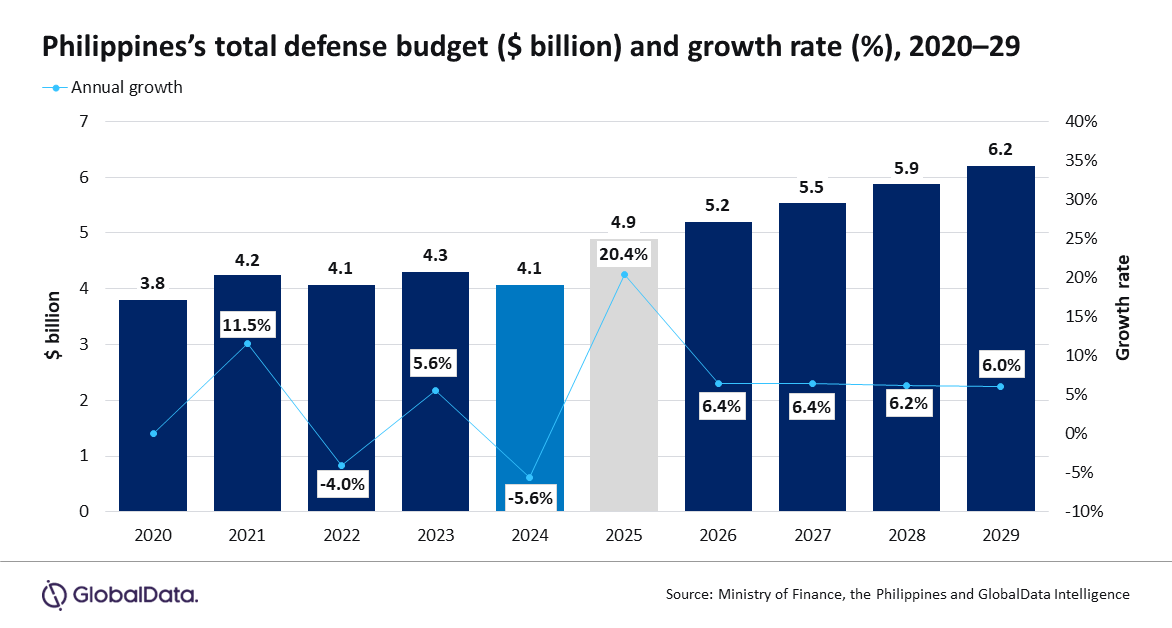The Philippines is embarking on an ambitious “Re-Horizon 3” military modernization initiative amidst the escalating territorial disputes in the South China Sea.
Despite financial constraints, the country aims to bolster its defense capabilities through strategic acquisitions.. With an anticipated increase in defense expenditure, reaching $6.2 billion in 2029, the Philippines seeks to enhance maritime and air defense capabilities to navigate regional complexities and safeguard its interests, according to GlobalData, a leading data and analytics company.
GlobalData’s latest report, “Philippines Defense Market Size and Trends, Budget Allocation, Regulations, Key Acquisitions, Competitive Landscape and Forecast, 2024–29,” reveals that the country’s defense acquisition expenditure is anticipated to grow at a steady compound annual growth rate (CAGR) of 4.9% during 2025-29. During the same period, defense expenditure is anticipated to grow at a CAGR of 6.2%.

As part of the PHP2 trillion (approximately $35 billion) “Re-Horizon 3” initiative, slated for implementation over the next decade, plans are in place to progressively enhance the procurement of modern weaponry while phasing out obsolete ones.
Rouble, Aerospace & Defense Analyst at GlobalData, comments: “The execution of the ‘Re-Horizon 3’ phases hinges on the performance of the Philippine economy. The funding constraints compelled a review and adjustment of the weapons wish list of the initial Horizon 3 plan, emphasizing a practical approach to align the objectives with the available resources. Despite these challenges, the revised version maintains its commitment to bolster the Philippine military, recognizing the need to strengthen its defense posture.”
In line with its defense modernization strategy, the Philippines is enhancing its defense capabilities in the maritime and air domain. Some of the major ongoing programs include the acquisition of Wonhae-class Offshore Patrol Vessels (OPVs), missile corvettes, fast attack interdiction boats, and S-70 Black Hawk helicopters. These acquisitions address the key areas of maritime security, enabling rapid response, and improving reconnaissance and surveillance, aligning with the broader defense modernization initiatives undertaken by the Philippine government.
Rouble concludes: “The focus on enhancing the naval assets underscores the country’s commitment to safeguard its maritime interests and maintain a robust defense stance in the face of the evolving regional complexities, especially in the South China Sea. The road ahead for the Philippines involves overcoming economic constraints, strengthening the defense industrial base, and navigating the complexities of international alliances to achieve the desired modernization goals.”





















Discussion about this post